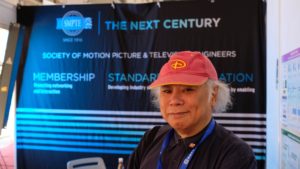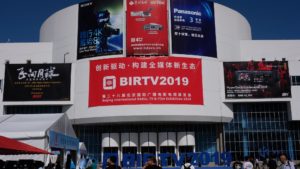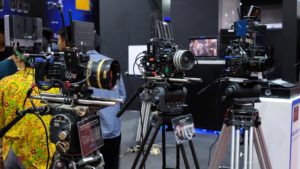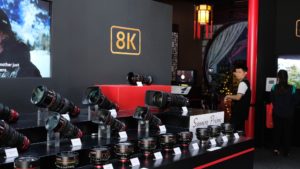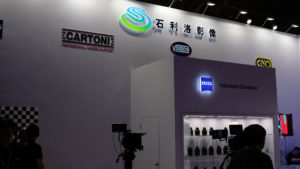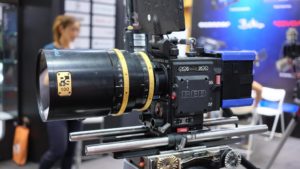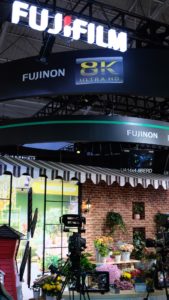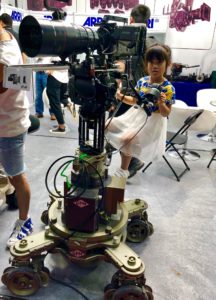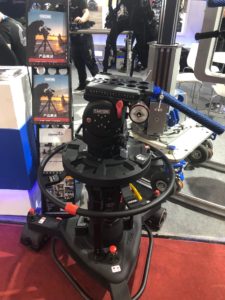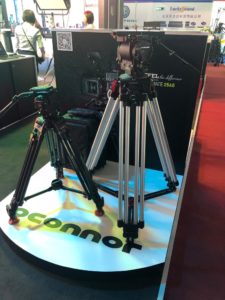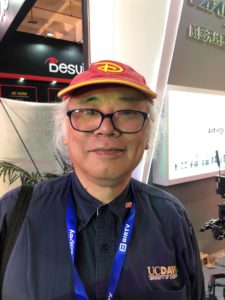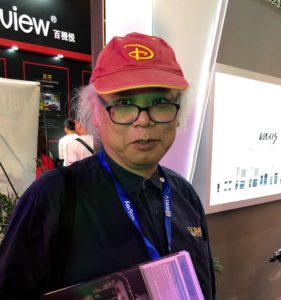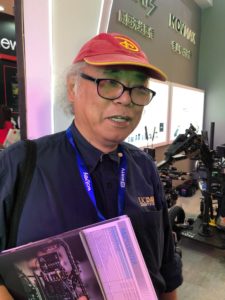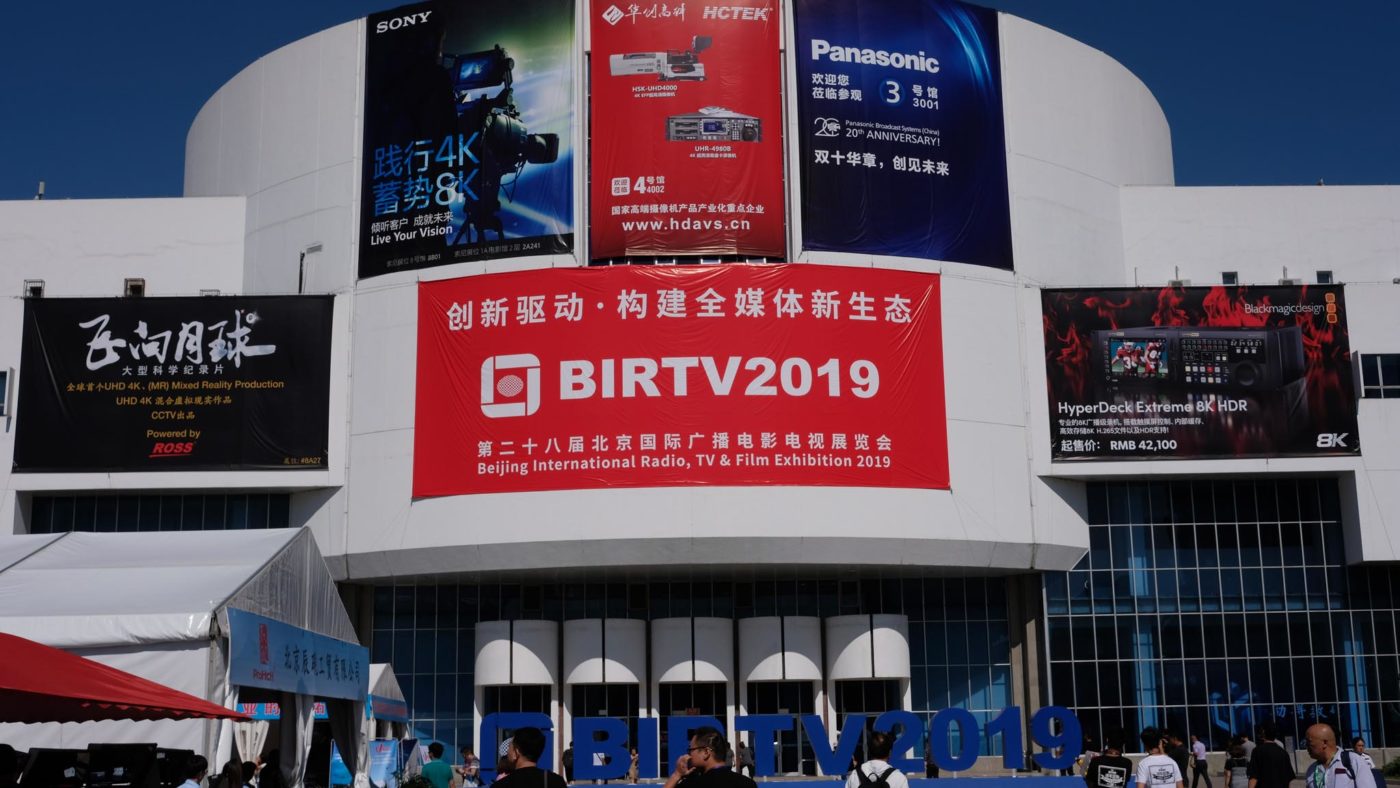
by Jacques Lipkau-Goyard
Beijing, BIRTV, August 2019.
Jiaozi are dumplings originating in northern China that are now enjoyed all over the world. Variations include potstickers in the US and gyoza in Japan. They are made of ground meat or vegetables inside a thin dough envelope whose edges are pressed together. Dip it in vinegar and sesame oil before eating. gyoza in Japan.
In the so-called Middle Kingdom, people normally finish preparing dumplings before midnight of Chuxi or the Lunar Chinese New Year Eve. This period of time is considered as the changing point between the old and the new year, and so they eat dumplings during this time to pray for joy, happiness and prosperity for the New Year.
This year, a young Chinese filmmaker, Yu Yang, must have eaten a good number of dumplings for happiness and prosperity, as “Ne Zha”, his animation feature directorial debut under the nom de plume of Jiaozi (dumpling) grossed over $700 million in just two months (600 million RMB, $84 million, in its first 3 days in China alone).
An astonishing success for the first Chinese-produced animated feature released in IMAX format, it sets a new benchmark for Chinese animation and raised hopes for China’s growing animation sector. While animated titles consistently account for 10% to 15% of the box office in the US and about 40% in Japan, the figure is estimated at only about 6% to 10% in China. Released in the US as “Nezha” with English subtitles first in IMAX, it grossed over $4 million in about 2 months.
This year’s 28th Beijing BIRTV—China’s most prestigious exhibition for film and television—was attended by the usual multitude of domestic and international companies presenting the latest technologies and innovations.
At the show, FDTimes interviewed a Hong Kong motion picture icon, Mr. Percy Fung Tze-Cheong.
Percy Fung is a multi award-winning producer, director, DP and technical director. He is the founder of Film Magic Group in Hong Kong, with 35 years experience in movie production and digital post, involved in over a thousand films in China, Hong Kong, Taiwan and around Asia.His works are related to “Advanced Motion Imaging”. He has been awarded a Fellowship from the Society of Motion Pictures and Television Engineers (SMPTE) andthe title “Hong Kong’s most influential person in Digital Entertainment.”
FDTimes: It has been said that the growth of China’s film industry has slowed down. Various reasons were given: China’s tightened capital controls, investigations into entertainment companies’ alleged financial misconduct, along with the merging of the film office, censorship and promotion departments under one roof at the Publicity Department. Do you think the film industry will soon overcome this situation?
Percy Fung: It may take a while. Recently, many movie and TV production teams in China and Hong Kong have dissolved. The number of productions went down. The requirements for an Official License to release or to produce have been tightened. Therefore, production, rental houses, and Studios are suffering. They all are under pressure.
FDT: The billion-dollar Chinese and Hollywood film industries have been collaborating for some time. Hollywood has come a long way in China since “The Fugitive” (directed by Andrew Davis and starring Harrison Ford & Tommy Lee Jones), the first revenue-sharing film to enter the Chinese market, in 1994. Meanwhile, China’s producers have been using the power of China’s market to advance their own agengas for the movies. This has led to a Sino-Hollywood formula that favors big-budget, high-tech, and at times hyperbolic blockbusters devoid of real political, artistic, and cultural edge. Will it change in the near future?
PF: There is an interesting Chinese market study here to be shared. The best top 3 box office movies in Chinese history were all from local moviemakers with no orthodox film school training. They learned to produce successful movies on their own. “Wolf Warrior 2” in 2017 grossed 5.683 Billion RMB. “Ne Zha”, grossed 4.9 Billion RMB, and the “Wandering Earth”, grossed 4.654 Billion RMB. During production, investors and producers alike were unhappy about the lack of exact production schedules. However these movies were finished on time by the passionate production teams. Good quality and special content typically attract Chinese public interest.
Personally, I see the investment under the Sino-Hollywood formula that favors big budget high-tech may not be always appreciated in the near future. Stories with good production value, that are rare, could bring audiences to cinemas as well.
FDT: How do you see the future Chinese film industry?
PF: China is a country with a population of 1.386 billion. The last 15 years of digital cinema growth have brought us over 60,000 cinemas. In early days, a rural country family had to drive hours to the city to see a movie as well as for shopping or having fun. Choosing a particular movie was very much affected by publicity and word of mouth. Today, I see that cinema audiences have changed as they look for meaningful story telling and an experience of life. On the other hand, cinema owners favor the release of big blockbuster movies in 3D stereo and IMAX releases that still continue to be box office driven content.
FDT: The new tax cuts in the Chinese animation film industry have generated a new investment trend. “Ne Zha”, the highest grossing animated movie ever made in China, is a good example. Do you think this will limit the investment in other film genres?
PF: As I have worked on a few animation features for China release as well, first, I would like to congratulate Ne Zha for its box office success. Well deserved. The government policy does not change easily and this affects investor’s intentions on projects. Every year, several Art student graduates open up local VFX and animation houses. Many of them chose their staff from outside Beijing.
FDT: What has captured your attention at BIRTV this year?
PF: To see that several low-cost cameras and lenses are developed in China. For instance, Kandao developed a low cost 8K camera for Sharp. The Instra Titan 360° Raw 11K VR Camera is a good VR tool. Tilta offers a great selection of grip and camera support tools that are nicely designed and well built. For Digital Cinema, manufacturers have provided various Laser Light sources, and 4D/5D motion seats.
FDT: Which is your favorite film camera today and why?
PF: I still enjoy all the good things from RED Digital Cinema. My works have always been with high quality imaging. HDR and Resolution are of great importance for my work.
FDT: What is your ideal camera/lens configuration and does it exist?
PF: I have always tried to build different tailored camera configurations and rigging to comply with my work needs. Not long ago I made a set up of 5 Multi RED cameras for a super High Resolution 15K screen venue presentation in China.
FDT: Today, anamorphic and full-frame are in fashion. What will be the next step?
PF: Digital Cinema is more friendly to full-frame formats. Occasionally we have clients requesting alternative non-standard screen formats, for example, a 2:1 wide screen aspect ratio. (editor’s note: which is what Netflix has accepted as well.)
FDT: As a 3D expert, will 3D come back or will we have to wait until the technology finally eliminates the glasses?
PF: Today, 3D films are popular in the Chinese Digital Cinema Chain. Many native 3D stereo camera rig productions have been replaced by post 2D to 3D digital conversions. The 2D to 3D conversion facilities in China can provide quality 3D at a very reasonable cost. On auto-stereo 3D productions, there are a few facilities making research. Among them, CCDL is very aggressive. The 3D cinema alternative aims at creating VR and 3D stereo VR cinemas along with motion seats.
FDT: Production companies seem to want to keep quality and increase productivity while reducing production costs. How will that evolve?
PF: Multi-camera set-ups are getting popular in China. Certain gimbal applications like DJI’s Force Pro are getting popular. Different means of camera rigging also provide more creativity. Every day there is something new coming up.
After talking to Percy, we looked around the 12 exhibition halls and as in previous years, there was a strong attendance of the major players asCanon, Sony, Angénieux, Fujifilm, Tilta, RED, ZEISS, ARRI China, Cooke, Cinetech, Vitec Group, Cartoni, c-motion, DMG Lumière, Kino Flo, Atomos, JVC, Panasonic, SIGMA and Panther, just to name a few.
For Vitec, the new Litepanels Gemini 1×1 Soft made its Asia-Pacific debut at BIRTV2019.
DPs had hands-on opportunities to experience a series of cine lenses and cameras, including the new ARRI ALEXA Mini LF, Angénieux Optimo Prime 40mm prototype and EZ series, Cooke 1.8x Full Frame Anamorphic SF & S7/I, SIGMA lenses, and RED MONSTRO VV 8K. Cartoni presented the new Maxima 5.0 fluid head and Sport200 tripod.
Next year, the 29thBIRTV exhibition is planned for August 18 to 22. There are rumors of a dedicated, separate cine equipment exhibition, but this is not confirmed.
Click on any image to begin slideshow:


